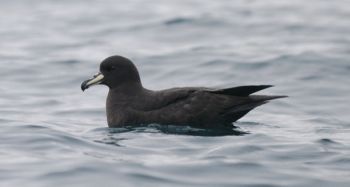David Hawke (School of Applied Sciences and Allied Health, Christchurch Polytechnic Institute of Technology, Christchurch, New Zealand) and colleagues, writing in the Journal of the Royal Society of New Zealand, have looked at whether detritus from Vulnerable and ACAP-listed Westland Petrels Procellaria westlandica supports arthropods residing in their burrows.
The paper's abstract follows
"Seabirds deposit large quantities of marine detritus on land, but little is known of the soil arthropods processing this material. Burrow-nesting seabirds concentrate their activities within their burrows, so we tested the hypothesis that burrow arthropod fauna is more marine-like in its isotopic enrichment (13C/12C, 15N/14N; expressed as δ13C and δ15N) than the arthropods on the adjacent forest floor. Results from a Westland petrel (Procellaria westlandica) colony on the South Island of New Zealand did not support the hypothesis. Instead, δ15N was universally marine (13-22‰). While δ13C separated into two clusters, the distribution was not according to arthropod provenance. Most taxa had a terrestrial δ13C; only two taxa (a leiodid beetle and the mesostigmatic mite Ayersacarus woodi) incorporated marine C. The leiodid beetle occurs both in burrows and on the forest floor; beetles from both habitats had a marine δ13C. Ayersacarus woodi is found only in burrows. We conclude that, in this system, marine and terrestrial detrital C is processed separately, and that marine detrital C enters the terrestrial ecosystem through a very few arthropod taxa."

Westland Ptrel. Photograph by Barry Baker
Reference:
Hawke, D.J., Clark, J.M. & Vallance, J.R. 2012. Breeding Westland petrels as providers of detrital carbon and nitrogen for soil arthropods: a stable isotope study. Journal of the Royal Society of New Zealand. DOI: 10.1080/03036758.2011.616211.
John Cooper, ACAP Information Officer, 30 July 2012

 English
English  Français
Français  Español
Español